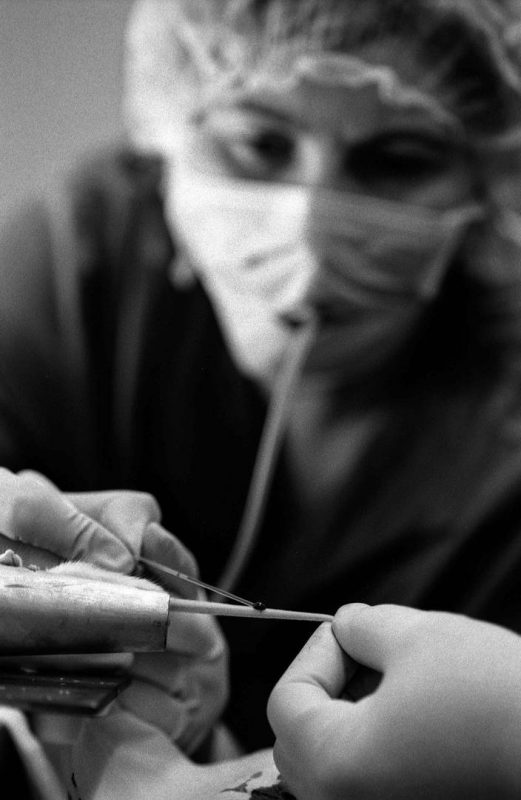1
(Links to previous Chapters are available here: Part I, Part II, Part III, PartIV, PartV, PartVI)
Global quarantines are an unprecedented mechanism. And this model came out of a center created by Mr. Donald Rumsfeld – a very fierce, tenacious, particularly vicious and eccentric Secretary of Defense under President George W. Bush.
On February 12, 2020 Imperial College London’s channel released a promotional video called “Imperial College on the forefront of the fight against coronavirus.” The video states the following:
“Professor Neil Ferguson’s group revealed the first accurate estimates on the size of the outbreak.
Professor Peter Openshaw is tracking how the virus affects the body and the immune system.
Professor Wendy Barclay pioneers work into how respiratory virus such as influenza spread and is spearheading efforts to apply this knowledge to coronavirus.
Professor Robin Shattock heads one of the few labs in the world developing (attention here – SK) a coronavirus vaccine. Professor Shattock’s vaccine is set to enter animal trials and could lead to human trials in as little as five months.”
We have already discussed everything concerning how accurate first estimates of the outbreak size were. I can add that the same Imperial College London website stated on February 10, two days before Professor Shattock was mentioned, that based on data from Hubei Province, COVID-19’s case fatality rate was about 18%. It was quietly added that travelers had a lower COVID fatality rate. But if we take a mortality rate of 18%, which was not applicable anywhere neither in Hubei, nor elsewhere (Nature Medicine March 19, 2020 reports that the CFR in China was 1.4%) – then much can be predicted. What does this have to do with a normal forecasting?
But this is not the main thing. But the fact that a certain professor Shattock is mentioned as a savior, who is on the brink of creating a vaccine. And then everything else will happen just like in Hollywood movies. The hero finds something and injects it into himself or into himself and his buddy, they do something – they mix something in a beaker and so on, and the whole dying world suddenly shudders and begins to miraculously recover. And then everyone is laughing and eating hamburgers while singing Happy Birthday to You. And everything turns out to be fine.
Professor Shattock of Imperial College London is tasked with the role of providing this salvation. Ferguson and Anderson are in charge of spreading the panic, while Shattock says that he will save everyone. Meanwhile they all belong to the same organization. An organization that is connected with Wellcome Trust and so on.
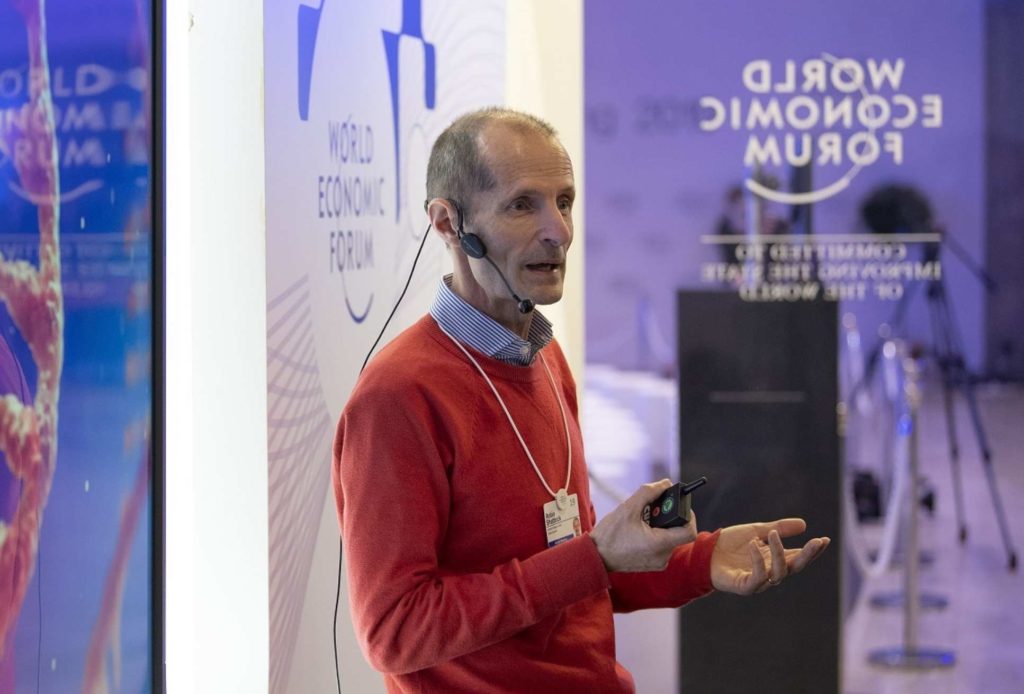
Who is this Robin John Shattock? He is a specialist in so-called mucosal immunity and HIV prevention. Why he was commissioned to lead the British initiative to develop a vaccine against COVID-19 is a separate question. One can only collect disaggregated data about this Shattock, who was born in 1963 and who worked for a long time – from January 1990 to March 2011 – at St. George’s University in London as a professor of cellular and molecular medicine. This University is otherwise called St. George’s Hospital Medical School, or just St. George’s School.
Shattock is known for his research on microbicides. He is a professional, no doubt as far as that – in a rather narrow and important area. Microbicides are topical agents that are applied as a gel or cream before sexual contact to prevent sexually transmitted infections. I don’t want to devalue anything here. He understands microbicides.
Shattock has worked in many places. To list all these positions, from the Rockefeller Foundation’s Microbicides Initiative Scientific Working Group to the Scientific Advisory Board for the International Partnership on Microbicides, as well as Chinese, South African, and other organizations, would mean spending a lot of time without any particular results. But three of the numerous organizations where Shattock has worked deserve serious attention.
The first of these is the La Jolla Institute for Immunology, of which Shattock is tightly integrated into the leadership of the La Jolla Foundation. And this is not an uninteresting organization.
The Institute of Immunology in La Jolla, a community in northwestern San Diego, was established in 1988. The president and founder of the institute being a Japanese man, Dr. Makoto Nonaka.
And the first scientific director of the Institute was also Japanese, Dr. Kimishige Ishizaka – an outstanding Japanese immunologist and the son of a Japanese general who retired in 1933. That is, long before the collapse of Japan.
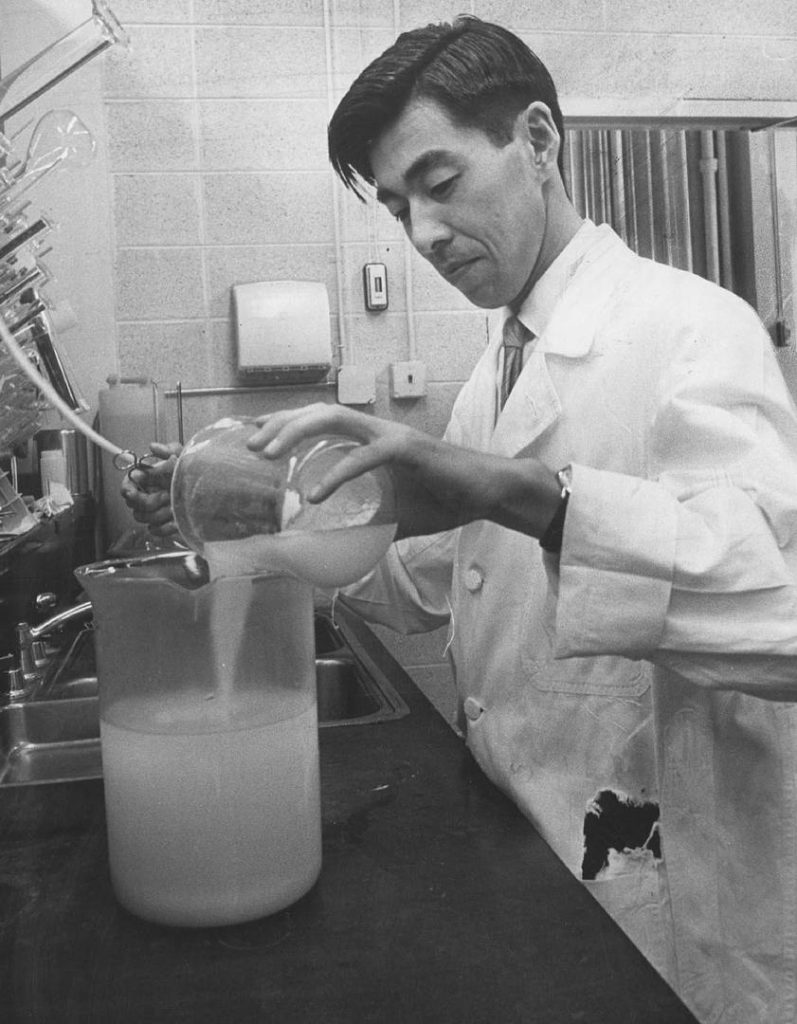
Kimishige Ishizaka received his doctorate in 1948 from the University of Tokyo. So, he is not like Tanaka. He was not born in the United States, he is from Japan.
Until 1962, he worked at the Japanese National Institute of Health in the Department of Serology, where he was head of the Division of Immunoserology, i.e. research concerning the diagnostic identification of serum antibodies.
From 1957 to 1959, Dr. Ishizaka worked as a research fellow at Caltech.
Then in 1962, Kimishige Ishizaka and his wife Teruko Ishizaka – as much an outstanding immunologist as her husband – moved to the United States at the invitation of a certain Sam Bukantz. With the help of this Sam Bukantz, they began working as immunologists at the University of Colorado Medical School, located in Denver.
In 1967, while working at this university, Kimishige Ishizaka and his wife Teruko discovered the immunoglobulin class E antibody.
After having worked for over 20 years in various medical centers in the U.S.; in 1989, Kimishige Ishizaka became the scientific director of the Institute of Allergy and Immunology in La Jolla.
A year later in 1990 he became the president of this institute.
Ishizaka retired in 1996 and returned to Japan (he missed it), where he served as honorary director of the Institute of Immunology at Yamagata University.
Since 2003, the Institute in La Jolla has been working with the National Institute of Allergy and Infectious Diseases. The Institute, which Anthony Fauci has headed since 1984 and which is part of the National Institutes of Health (NIH) – we have already discussed these structures in detail in connection with the coronavirus in previous episodes.
Of course, it is interesting that for many years the American institute in La Jolla was headed by natives of Japan who moved to the US and later returned to Japan. Moreover, these were Japanese men and women from fairly reputable families.
But another thing is even more interesting. Plenty of people travel around the world, and there are plenty of places where they work… But what is more interesting than this tiny fact, which in itself could not attract such attention, is the following. In 2013, the La Jolla Institute expanded its partnership with Kyowa Hakko Kirin, a Japanese pharmaceutical company that is part of Kirin Holdings. “Expanded its partnership” means it was already working directly alongside it.
The official website of Kirin Holdings indicates that it has made approximately $18 billion worth of sales in the 2019 fiscal year.
As for the holding’s pharmaceutical company, Kyowa Hakko Kirin, with which the La Jolla Institute, where Shattock worked, began expanding its partnership, its annual revenue for 2019 was $2.86 billion. Among other things, the company deals with those antibodies that have gotten so much attention now because of the coronavirus. And it has made great accomplishments in this direction.
Let me say it again. This structure, called the La Jolla Institute, where Shattock is rooted, was founded by the Japanese, and it has a special friendship with the Japanese. And these Japanese have a certain interest in the lifesaving vaccine, which Shattock is supposed to create. Rather interesting, isn’t it? If that was all, maybe I wouldn’t bother discussing it. But that is not all.
The second organization that deserves our attention, which is one of those that Dr. Shattock has graced with his participation in their work, is the Scientific Advisory Board for the International Partnership on Microbicides. Shattock served as the director of this Council. It was reported that Shattock “directs a research group working on the pathogenesis and transmission of HIV infection, with a particular emphasis on the development of prevention strategies applicable to the developing world. His research group has been instrumental in elucidating the early mechanism of HIV transmission, which is being used in a translational fashion to develop safe and effective vaginal microbicides and to explore novel HIV vaccination strategies. Prof. Shattock’s group (attention! – SK) receives funding from the Wellcome Trust, the Bill & Melinda Gates Foundation, the European Commission, the US National Institutes of Health… (boldface is mine – SK)”
Upon examining the second of the organizations where Shattock’s work can tell us something significant, we encounter the Bill and Melinda Gates Foundation, the Wellcome Trust, and the National Institutes of Health.
Well, the third organization that can tell us something about Dr. Shattock is Imperial College London. I’m sorry to repeat this name so often. But, as they say in such cases, you can’t throw words out of the song.
Shattock has been working at Imperial College London since 2011. In November 2013 he won a grant for a DNA-vaccine project, which is funded by the same Gates Foundation. Here is what is written on the Imperial College London website about this achievement by Dr. Shattock, “Prof Shattock’s group is responsible for the DNAVAC project which aims to apply recent state of the art technological advances in DNA vaccination and immune monitoring, both at the single cell and molecular level, to enable detailed probing of developing vaccine induced antibody responses.”
In 2017 Shattock became a professor of the Faculty of Medicine at Imperial College London.
The website of the UK Academy of Medical Sciences states that Shattock “is an international leader in the field of mucosal immunology and HIV prevention. He has been a pioneer in working out how to use both drugs and passive antibodies to prevent HIV transmission, first showing that they work in models in vitro and then translating to clinical trials. Translation of this work requires extensive international collaborations and he has been a leader in establishing these to drive development of drug-based prevention and prophylactic vaccines, in particular establishing and directing the EUROPRISE Network of Excellence on Vaccines and Microbicides that coordinated EU funded research across 40 institutions.”
Since 2020, Shattock has been coordinating the European AIDS Vaccine Initiative. The initiative website states that it is a consortium “led by Imperial College London,” and it “unites scientists from 22 institutions, pooling their knowledge and expertise to develop novel candidate vaccines that can be taken through to human trials within five years.”
Is it clear why Shattoсk will save us, and how CEPI is connected with Imperial College? In other words, why will we be saved by Imperial College, Wellcome Trust and others?
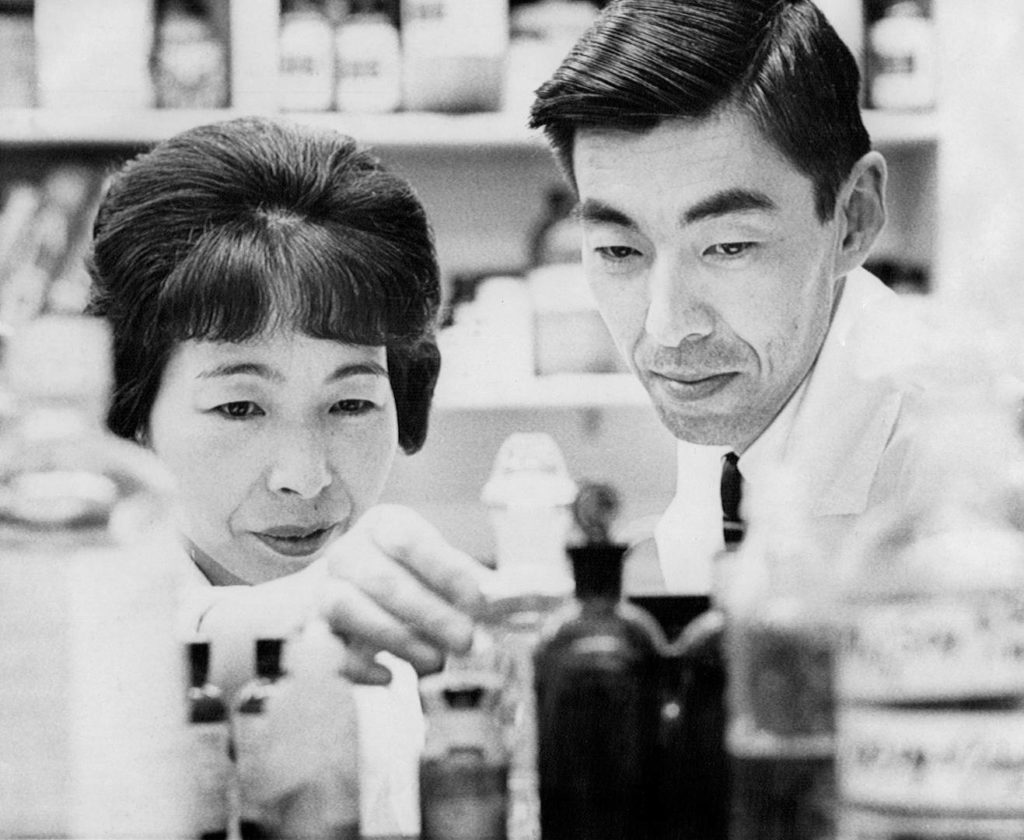
Shattock is also part of the leadership of Advanced Immunization Technologies (ADITEC for short). In this role he leads a group focused on improving the immunogenic quality of vaccines.
And if someone thinks that Mr. Shattock, who works on the topic of COVID at Imperial College London, and Mr. Ferguson, who works on the same topic, as well as Mr. Anderson with them, exist separately from each other, then this “someone” is a strange person.
Ferguson screams that without a COVID vaccine, the world is threatened with total extinction, that the world will, in all actuality, die. Shattock is recommended as the main savior who will create the vaccine and Anderson coordinates all this in coalition with all the organizations we have familiarized ourselves with. And all this has nothing to do with each other? I’m sorry, but it just doesn’t work like that.
And now I propose to discuss another, much more complicated issue. And I want to say specifically that I have no desire to demonize Japan. That demonization is the basis of the conspiracy theorist method, where you have to grasp at a single factor, absolutize it and start screaming, “Look, look, here!
My method is to build a system with many elements and many factors. And if among the factors, along with Fort Detrick and so on, there is a Japanese factor, I have to highlight it, but not demonize it.
I have the deepest respect for Japan, for its culture. We are old friends with Japanese representatives of the theatrical world. I have always paid special attention to the Japanese tradition, which in no way negates my disgust at the brutal Japanese experiments in biological weapons and the genocide, that the Japanese perpetrated in the same way as the Nazis. But this does not mean that I do not love Schiller or Germany. Exactly the same is true of Japan.
But most importantly, you have to understand once again, that there are many elements in the overall picture, they are important, and the connections between them are even more important. If you grab one instead and start shoving it into everyone’s face, then you get a total mess. But if you don’t point it out, there will simply be an empty space.
That is why I will now talk about the Japanese factor – not about some Japanese conspiracy, and not about some Japanese demonism, but about one of the factors that undoubtedly exists.
Who is Gary Tanaka, who became the founder of Imperial College London Business School? He is a Japanese man, born in the United States, who made investments in Internet companies, served time in prison for fraud, and once released continued, together with his sons, certain business activities, including various investments in high-tech products. Does this Tanaka exist, is he not fictional? Yes. Should the great Japanese culture and the great Japanese nation be responsible for him? Of course not. This is nonsense. But does he or does he not exist? He does.
Does this Tanaka have nothing to do with Imperial College London, as well as those representatives of this college, whom I have been constantly discussing (Ferguson, Anderson and so on)? Is he not affiliated with them in any way? That is not how it works.
And what is Abdul Latif Jameel, the company with which Imperial College London and Mr. Ferguson are personally associated? What kind of company is it? It is a particularly successful distributor working with the Japanese company Toyota, isn’t it? This distributor has nothing to do with Tanaka? One has to be completely ignorant about Japan to imagine such a disconnect.
And what is this La Jolla Institute of Immunology, with which Shattock from Imperial College London is associated? It is an institute created by Japanese natives who came to the United States. It is an institute that has established strong ties with one of Japan’s largest pharmaceutical companies. So, this company has nothing to do with the other Japanese endeavors that I am examining? It has nothing to do with the sixteen Japanese pharmaceutical giants that paired with the Gates and the US National Institutes of Health to create a vaccine development platform called the Global Health Innovative Technology Fund (GHIT)?
Such lack of connection among massive undertakings involved in the same subject and cooperating in the same field is simply impossible. It would be like if people were sitting for 10 years in the same room, doing the same thing, all the time discussing joint projects with each other, producing joint products – and they didn’t develop any connections with each other. That’s just not how it works.
Does that indicate some kind of conspiracy? Of course not! It indicates exactly what I pointed out. And if I was asked to elaborate on something, I would answer with the words of Leo Tolstoy, who said that he could elaborate on what he wrote in his novel Anna Karenina in one way – by writing the novel again.
Does everything that I said mean that the Japanese connection is the only one? No, it does not.
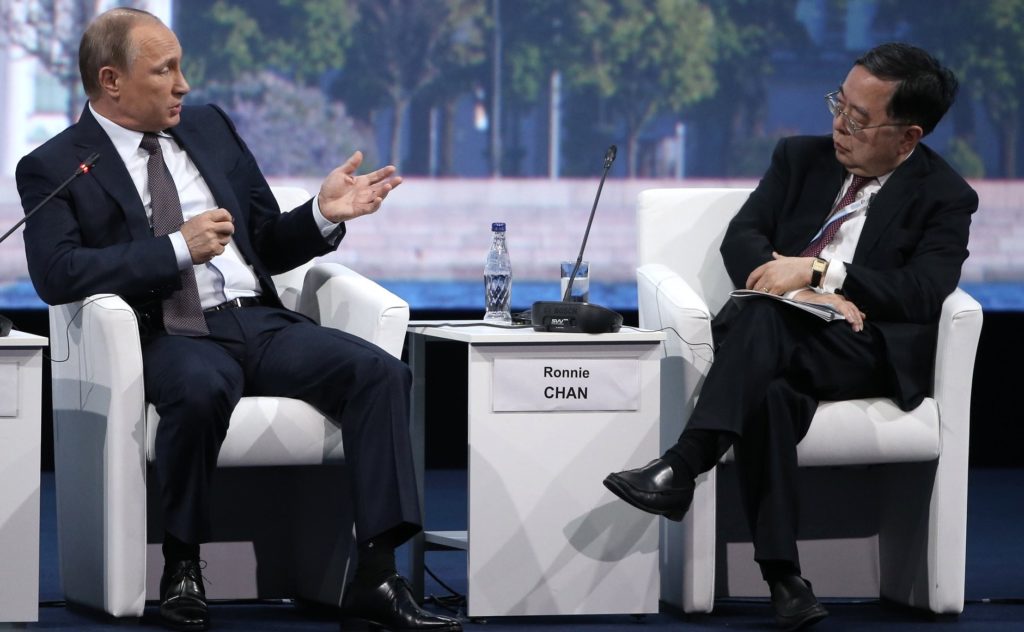
On June 7, 2020 Imperial College London announced that it has founded a new venture, VacEquity Global Health (VGH), together with Hong Kong-based Morningside Venture Capital. The mission of this enterprise is to rapidly develop and mass-produce a coronavirus vaccine for the entire world. The vaccine will have a moderate price and will be available to even the poorest countries.
Morningside Venture Capital was founded in 1986 by the Chan family from Hong Kong. It is a leading global investor in the field of natural sciences.
In 2014, the brothers Ronnie and Gerald Chan donated $350 million to Harvard University School of Public Health. In recognition of this generous donation, the University named the School of Public Health after Chan Tseng-Hsi, the father of the Chan brothers, a Chinese entrepreneur who moved to Hong Kong in the 1940s and founded the Hang Lung Group real estate company in 1960.
In addition to VGH, Imperial College London and Morningside Venture created another enterprise – VaXEquity (VXT). The mission of VXT is to develop self-amplifying RNA technology to treat not only COVID-19, but also other diseases. According to Imperial College, “The two new ventures are built upon years of research of Professor Robin Shattock who pioneered the technology of self-amplifying RNA.”
What is self-amplifying RNA technology? As Shattock himself has explained, his group took a completely new approach to vaccine development. This approach consists in the fact that based on creating a strand of RNA from the genetic code of the virus, which contains the amino acid sequence for a spike protein like that of SARS-CoV-2, and from an enzyme that allows you to quickly make copies of this RNA. Once in a cell, this RNA multiplies and the cell begins to produce the spike protein on its basis, which then reaches the cell surface. The body begins to produce antibodies against this protein. The antibodies obtained in this way will react to the same protein in SARS-CoV-2 as soon as the virus enters the body and will hamper it from multiplying effectively.
In the same report dated June 7, 2020, the Imperial College London website asserts that Shattock’s approach allows for obtaining a vaccine against any disease in record time and makes its production very cheap: after the RNA is synthesized, it multiplies rapidly in cells, which will allow millions of vaccine doses to be produced in record time.
The report also states that the British government has allocated 40 million pounds to Imperial College for the development of a vaccine against COVID-19. Private donors provided another £5 million to Imperial College. This support helped Professor Shattock’s team obtain the COVID-19 genetic code from China and develop a vaccine candidate to test on animals and prepare for human trials within 14 days in January.
As Robin Shattock noted regarding VGH and VXT, “These new enterprises are the most effective way for us to deliver COVID-19 vaccines quickly, cheaply and internationally, while preparing for future pandemics.”
And Gerald Chan, co-founder of Morningside Venture, said: “The Imperial vaccine technology is a ground-breaking innovation that is readily scalable. This technology has been developed with scientific rigour and a regard for manufacturing scale that is required for any solution to the present pandemic.”
On June 15, 2020, Shattock’s group announced the beginning of human trials of the vaccine, as animal testing of the vaccine has proven its safety and effectiveness in producing antibodies to coronavirus. As stated on Imperial College’s website, further human trials of the vaccine – involving already six thousand people – are scheduled for October 2020. If these human trials are successful, the Imperial College vaccine could be distributed in the UK and overseas by early 2021.
And now regarding this CEPI, which is called to save humanity, by providing it with a vaccine against the “terrible” COVID. This structure, as we know, accommodates the Japanese, Gates, the US National Institutes of Health, and Imperial College London. In short, all of these – and something more.
More than forty years ago, my family rented a dacha (Russian rural vacation home -translator note) in a village that was adjacent to a place where Soviet leaders lived. My little daughter, walking with her grandmother through the fields and groves, would stumble from time to time upon a high fence, which separated one executive dacha or another from the neighboring territories. Sighing, my daughter would say: “Mo’ dachas!”
I remembered this when I read up on CEPI, whose CEO is… who would you think? But before that let’s proceed in order.
The CEPI concept was described much earlier than it was officially announced (which was in January 2017 in Davos). The concept was presented in the July 2015 issue of The New England Journal of Medicine.
The article was entitled “Establishing a Global Vaccine-Development Fund”. The authors of the article were British researcher Jeremy Farrar, the director of the Wellcome Trust, which we now know so well, US physician Stanley Plotkin (one of the developers of the measles vaccine) and US infectious disease expert Adel Mahmoud (who developed vaccines against human papillomavirus (HPV) and rotavirus).
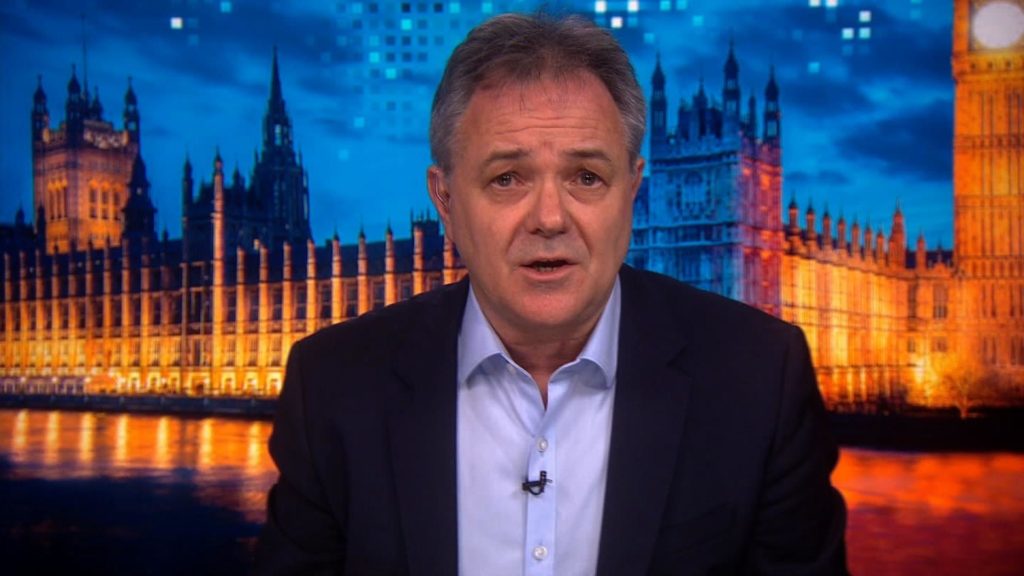
The idea for CEPI was discussed in greater detail at the World Economic Forum in Davos in January of 2016.
And on September 6, 2016 the future CEPI organization’s website was launched, about which the journal Science gladly informed everyone.
Here is information from the official CEPI website – I don’t want anything else:
CEPI was founded in January 2017 in Davos by the governments of Norway and India, as well as the Bill and Melinda Gates Foundation, the Wellcome Trust, and the International Economic Forum in Davos.
CEPI has received numerous financial investments from the governments of Australia, Belgium, Canada, Denmark, Ethiopia, Finland, Germany, Japan, the Kingdom of Saudi Arabia, the Netherlands, Norway, the UK and Switzerland, as well as the Bill & Melinda Gates Foundation, the Wellcome Trust as well as the The European Commission who has also provided significant financial contributions to support these projects through its many mechanisms.
CEPI has also received donations from private companies and individuals through the UN Foundation COVID-19 Solidarity Response Fund to support efforts to develop a COVID-19 vaccine.
Close collaboration with global partners is also crucial to the success of our work to develop vaccines against emerging infectious diseases. That’s why we work with industry, regulators, and other bodies to ensure that any vaccines we develop get licensed and can reach the people who need them.
CEPI positions itself as an innovative global partnership between public, private, philanthropic, and civil society organizations that will fund and coordinate vaccine development against high-priority threats to public health.
Well, what can be of higher priority than COVID!
CEPI will also oversee platform technologies for vaccine production to rapidly respond to new infectious diseases with pandemic and epidemic potential.
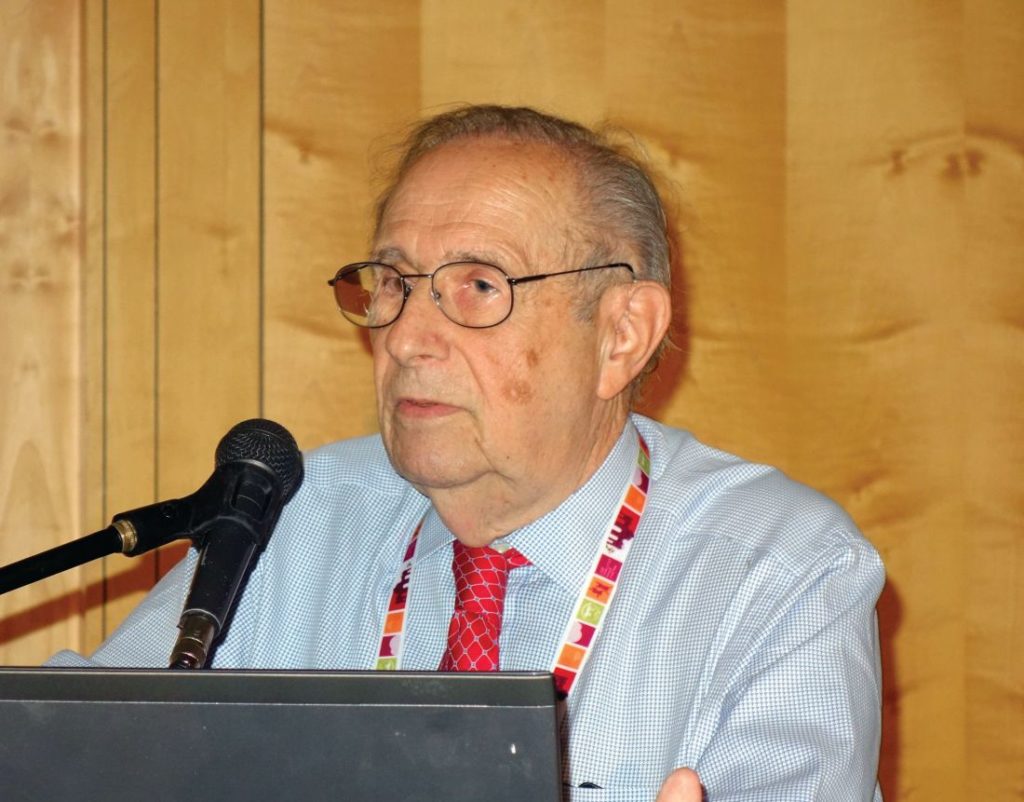
So, I have already mentioned that CEPI has been chosen as the savior of humanity from the coronavirus. And as we can see, everything checks out.
Well, now about why I suddenly remembered how my little daughter used to say “Mo’ dachas?”. Because Richard Hatchett is the CEO of CEPI. And I have the right to say “Mo’ Hatchett?” Because this is the same Richard Hatchett who was part of Rumsfeld’s think tank, created many years ago, which focused on universal quarantines, which was impossible or seemed impossible to humanity before Rumsfeld began working on it with the help of Hatchett and others. This quarantine, I recall, was to be implemented in response to the People’s Republic of China using biological weapons against the United States.
In the first episodes of this program, I have already directed the viewer’s attention to how global quarantines are an unprecedented thing. And that the model of such quarantines was first developed recently – at the beginning of the 21st century. That this model was developed in a center created by Mr. Rumsfeld, a very fierce, tenacious, particularly vicious and eccentric Secretary of Defense under President George W. Bush.
I also pointed out that the test tube that US Secretary of State Colin Powell showed off at the UN, arguing that Iraq possessed biological weapons and that Saddam Hussein wanted to use them (this was a massive lie, but, as we know, it worked), is related to Mr. Rumsfeld’s endeavor. And also, to everything that revolved around Fort Detrick, including mind control and torture in special prisons.
At that time, I mentioned the names of those who were part of that special center that Rumsfeld established, which was developing this future global special biological shock. And Richard Hatchett was among the names I had brought up.
And now again we have more Richard Hatchett, but now as the CEO of CEPI, this future savior of humanity from the scourge of coronavirus. And what does this Hatchett tell us?
Do you still remember GSK, which became a pharmacological giant closely linked to the Wellcome Trust, which gave Hatchett the mandate as the CEO of CEPI, this savior of humanity from COVID-19?
Well, on February 3, 2020, it was announced that CEPI would start working with GSK to strengthen the global effort to develop a vaccine for the 2019-nCoV virus. It has come full circle. CEPI, Shattock, and others will be the saviors. But GSK will be doing the work.
Briefly recall that GSK’s revenue in 2019 was £33.8 billion, or $43 billion. And GSK’s profit margin in 2019 was £9 billion, or $11 billion.
Also that the volume of GSK’s investments in research and development was about £4.3 billion, or more than $5 billion.
That GSK is developing 39 promising drugs and 15 promising vaccines. And one super-promising vaccine, for the sake of which you must stay at home.
Having said that, I give the floor to Dr. Hatchett, who is – I remind you once again – the CEPI’s CEO, only because he was given such a mandate by the Wellcome Trust, which is firmly anchored in GSK.
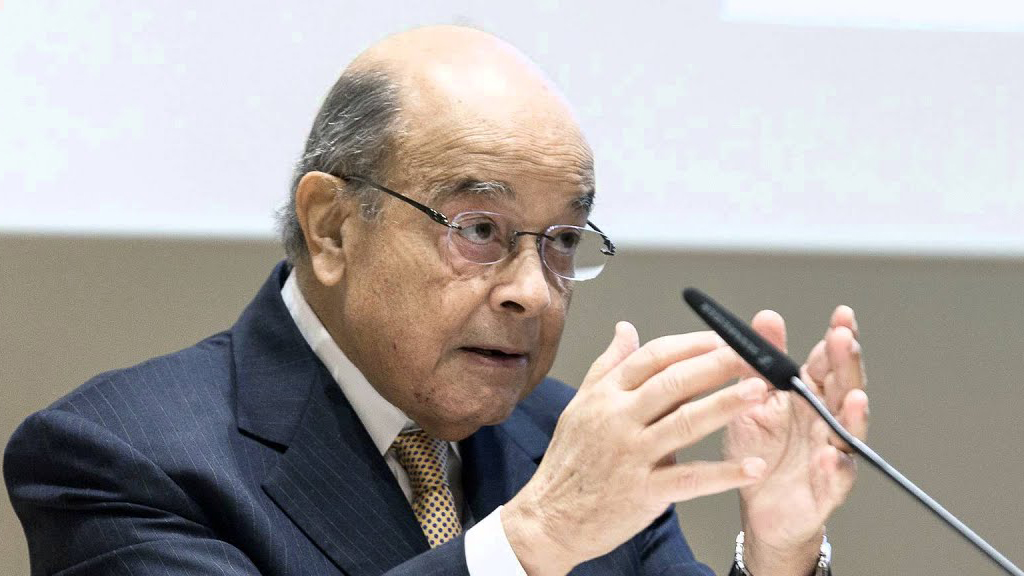
This is what Richard Hatchett (no one could put it better than him) says on the GSK website about the happy marriage between CEPI and GSK, “Gaining access to GSK’s world-leading adjuvant technology is a huge step forward in developing a vaccine against the novel coronavirus 2019-nCoV. Coupling GSK’s adjuvant systems (i.e. a complex of substances that enhance the immune response, including during vaccination. – SK) with the pioneering platform technology we are funding has the potential to make more vaccine available more rapidly – by decreasing the dose of vaccine antigen required to protect each individual. This “antigen-sparing” effect makes a given supply of vaccine go farther, increasing the number of people who can benefit.”
So, Hatchett explicitly says what GSK will do. And he says: “Alright GSK, come here! With your products!”
And here is what Thomas Breuer, Chief Medical Officer of GSK Vaccines, says about the happy “marriage” of CEPI and GSK on the same site: “As a leader in science and innovation, we believe we can help to contribute to the fight against 2019-nCOV with one of our advanced vaccine adjuvant systems. Our adjuvant technology has previously been used successfully in the pandemic flu setting. It enables using only small quantities of the vaccine antigen which allows the production of more doses of the vaccine – a crucial advantage in a pandemic.”
And here’s what Roger Connor, president of GSK Vaccines, says on the same site about the same topic: “At GSK we believe in the value CEPI can bring to responding to outbreaks like 2019-nCOV. We are proud to contribute to cutting edge research from scientists at the University of Queensland, and we are open to working with other partners, who have a promising vaccine platform that could be used together with our adjuvant.”
And here’s what the scientists from this very University of Queensland, who are assisting GSK and CEPI, say. Peter Hoj, Vice-Chancellor of the University of Queensland, is delighted to say that “The research team at The University of Queensland are progressing a 2019-nCoV vaccine program and the availability of the GSK adjuvant will enable us to carry out important pre-clinical experiments designed to assess vaccine effectiveness.”

And next comes something reminiscent of reports by an international Information Bureau about an ongoing anti-COVID war: CEPI will coordinate the collaboration between GSK and CEPI-funded organizations interested in testing their innovations using the GSK adjuvant system to create effective vaccines against 2019-nCoV coronavirus. The first formal partnership agreement was signed between GSK and the University of Queensland, Australia, which entered into a partnership agreement with CEPI in January 2019 to develop a molecular platform for selecting and scaling up vaccine production. CEPI has expanded funding for this project to work on the candidate vaccine for the 2019-nCoV coronavirus. Access to GSK adjuvant systems will enable the research to intensify.
On March 6, 2020, Richard Hatchett said on Channel 4 News that since 1918 – the time of the Spanish influenza epidemic – there had been no virus that has so effectively combined two qualities: high infectiousness and high lethality.
Hatchett: “I don’t think it’s a crazy analogy to compare this to World War II.”
Correspondent: “Many people may be surprised, if not insulted, that you’re comparing this to the World War II… You’re using these martial metaphors, you’re making it sound very scary. You have a vested interest in making people fearful, so you get the investment in a vaccine. What do you say to that?”
Hatchett: “I have been working on epidemic preparedness for about 20 years. And completely dispassionately, without elevating the temperature or speaking hyperbolically, this is the most frightening disease I’ve ever encountered in my career. That includes Ebola, MERS and SARS. It’s frightening because of the combination of infectiousness and a lethality, that appears to be many fold higher than the flu.”
Well, there you go – it’s really, “Mo’ Hatchett.” But is it only Hatchett?
On April 22, 2020, The New York Times reminded its readers that the idea of social distancing as a measure of non-pharmaceutical intervention in combating an epidemic was first voiced in the National Strategy for Pandemic Influenza (2006), and mentioned the names of Carter Mecher and Richard Hatchett as the main authors of the idea of social distancing, following which the tenants of one house will be allowed to go out at one time, hands behind their backs, and the tenants of a different house at another time – with hands behind their backs too.
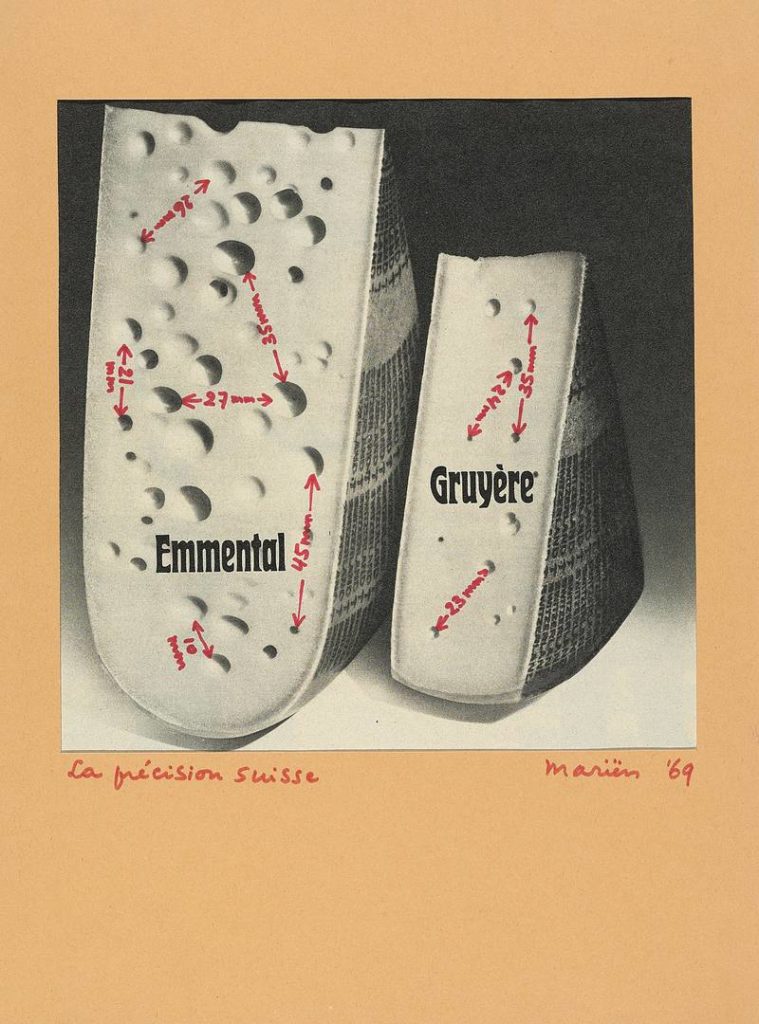
Here is what The New York Times says: “Drs. Hatchett and Mecher were proposing instead that Americans in some places might have to turn back to an approach, self-isolation, first widely employed in the Middle Ages. How that idea — born out of a request by President George W. Bush to ensure the nation was better prepared for the next contagious disease outbreak — became the heart of the national playbook for responding to a pandemic is one of the untold stories of the coronavirus crisis.” Or coronavirus insanity, as I call it.
“When they (Hatchett and Mecher – SK) presented their plan not long after, it was met with skepticism and a degree of ridicule by senior officials, who like others in the United States had grown accustomed to relying on the pharmaceutical industry, with its ever-growing array of new treatments, to confront evolving health challenges.”
The paper stresses that “Mecher and Hatchett had to overcome intense initial opposition… The concept of social distancing is now intimately familiar to almost everyone. But as it first made its way through the federal bureaucracy in 2006 and 2007, it was viewed as impractical, unnecessary and politically infeasible… ‘People could not believe that the strategy would be effective or even feasible,’ Dr. Mecher recalled.”
To make this recent information from The New York Times sound even more relevant (one might think, how could it possibly be even more relevant), I will read a small piece from Bush’s 2006 National Strategy for Pandemic Influenza, which the respected American newspaper mentioned 14 years later.
And so, here is a quote from the National Strategy for Pandemic Influenza 2006, page 6. “Border and transportation measures will be most effective in slowing the spread of a pandemic if they are part of a larger comprehensive strategy that incorporates other interventions, such as the adherence to infection control measures (hand hygiene and cough etiquette), social distancing, isolation, vaccination, and treatment with antiviral medications.” This was stated in the National Strategy for Pandemic Influenza in 2006. George Bush, Rumsfeld, and others commissioned it. Hatchett and Mecher executed it but it was not them alone.
So, you see, it really is more Hatchett, and more Mecher, as well as others. And all this in order to first lock you up in your apartments, and then to temporarily release you, until the second wave of the pandemic, and promising you a third sentence… sorry, wave of COVID-19?
Who is this Richard Hatchett?
He studied at the private Vanderbilt University and at the same University’s medical school.
He earned his MD.
Since then he has worked in various medical institutions.
In 1997, he worked on Ebola hemorrhagic fever in Africa.
From June 2002 to June 2004, he worked as a senior advisor to the Office of Public Health on Emergency Preparedness. The Office itself was created under George W. Bush by his Secretary of Health and Human Services, Tommy Thomson, who also discussed a global quarantine as a response to a biological attack from communist China.
Then – from November 2002 to May 2003 – Hatchett was the U.S. Department of Health’s program coordinator at the TOPOFF 2 National Counterterrorism Exercise. The counterterrorism exercise, codenamed TOPOFF 2 (for Top Officials), was extensive. The purpose of the exercise, which took place in May 2003, was to identify vulnerabilities in the interaction between various federal and local organizations during a terrorist threat.
Planning for TOPOFF 2 began in June 2001. The work of hundreds of specialists in protection against weapons of mass destruction resulted in a 200-page scenario.
According to the scenario, terrorists first detonate a “dirty bomb,” an explosive device that disperses radioactive substances, in downtown Seattle.
Then the events move to Chicago. Patients with flu-like symptoms begin to arrive in Chicago hospitals, and their numbers multiply rapidly during the day.
According to the scenario, the diagnosis made by local doctors is confirmed by specialists from the Centers for Disease Control and Prevention located in Atlanta. It turns out that the Chicago residents were attacked with a biological weapon – an unknown virus – three days prior, which is the incubation period of the disease. Chicago’s population then flies into a state of panic while authorities attempt to distribute medications to the frenzied crowds.
Meanwhile, in the Canadian province of British Columbia, in the Canadian city of Vancouver, an epidemic of flu-like illness suddenly erupts, brought in by passengers arriving from Chicago’s international airport.
The website of Global Security calls the TOPOFF 2 exercise the largest and most comprehensive counter-terrorism exercise ever conducted in the United States.
From July 2005 to January 2011, Hatchett served as Associate Director for Radiation Countermeasures Research and Emergency Preparedness at the National Institutes of Health (NIH), which we have discussed many times previously.
I would like to emphasize that the budget of these very National Health Institutes is not just huge. It has also grown two and a half times over the past 20 years. In 1999, the budget of the NIH was $15.5 billion, and by the end of 2018 it was expanded to $37 billion.
The North Carolina Military Business Center website stated that in 2005-2006, Hatchett “served as Director for Biodefense Policy on the White House Homeland Security Council and was a principal author of the National Strategy for Pandemic Influenza Implementation Plan. In this capacity, he helped set policy and devise strategies to mitigate the consequences of a pandemic and promote pandemic preparedness.”
Hatchett has done a lot of other things. Including coordinating the medical program for the response to Hurricanes Katrina and Rita. In other words, this is a person with a different kind of competence. He is not a pure scandalist like Ferguson – a career scandalist, who understands what is asked of him, and then carries out the order. Hatchett is a person with a combination of a certain knowledge with a large and predatory organizational potential.
Now here is an original detail. In January 2008, Hatchett became a Deacon of the Presbyterian Church in Bradley Hills, Bethesda, Maryland. Once again, we encounter the sectarian theme that we had to deal with in connection with Redfield, Shepherd Smith, Vice President Pence and, as it was said in the Soviet era, other officials.
From April 2009 to January 2011, Hatchett worked at the White House National Security Staff as Director for Medical Preparedness Policy. Meaning pandemic preparedness. Specifically, he was involved in the medical development of countermeasures against the 2009-H1N1 pandemic (swine flu).
Look at the years: 2009-2011! The White House National Security Staff, position – Director for Medical Preparedness Policy, for the pandemic. I am not falsifying these 5-6 facts. These facts keep rolling into the same pocket. And as the theory of probability says, when there are a lot of facts and there are a lot of pockets, there is no chance that they just randomly fall into the same pocket.
From January 2011 to March 2017, Hatchett worked for the US Department of Health and Human Services in the Biomedical Advanced Research and Development Authority (BARDA) as chief medical officer and deputy director. He was also the acting director of BARDA from March to November 2016.
The London School of Hygiene and Tropical Medicine website states the following, “At BARDA (the US Department of Health and Human Services in the Biomedical Advanced Research and Development Authority – SK), Dr. Hatchett oversaw programs to develop medical countermeasures against chemical, biological, radiological and nuclear threats, pandemic influenza, and emerging infectious diseases and led or helped lead the development of vaccines, therapeutics, and diagnostics for a number of emerging viruses, including the H3N2v and H7N9 influenza viruses, MERS, Ebola, and Zika.”
Hatchett has been CEO of CEPI since April 2017. Is it clear who is saving us? Dear citizens, you will be saved in so many ways. Not only through vaccination, but also utilizing this method.
At the same time, Hatchett is on CEPI’s Board, a collegial governance body that represents investors, observers and key specialists in various fields related to CEPI’s activities.
Members of the Board are divided into two groups, those with, and those without voting rights. The CEO is a non-voting member of the Board.
But Hatchett is not the only figure to come from the Rumsfeld cadre in order to impose the COVID grace upon us.
The CEPI board also includes a certain Rajeev Venkayya, MD, the president of one of the vaccine companies. Unlike Hatchett, Venkaya has a vote on the Board. The CEPI website indicates the employer of this guest from Rumsfeld’s past: Vaccine Division, Takeda Pharmaceutical Company Limited.
Takeda Pharmaceutical is a massive Asian pharmaceutical company, one of the 15 largest companies in the world and is a Japanese company by its genesis. Its founder is Japanese, Mr. Chobei Takeda. And its key figure is its Chairman of the Board, Mr. Yasuchika Hasegawa. The company’s head office is in Osaka. This office is also the location of one of its research centers. At the same time, it is a global research structure with factories in many places, including Russia. The company’s revenue in 2019 was almost 31 billion dollars.
Here is what a voting member of the CEPI board recalled on April 24, 2020. This is the head of the Vaccine Business Unit of this very Takeda, Mr. Rajeev Venkayya, who previously served as Special Assistant to the President for Biodefense at the White House. When was this? From 2005 to 2007. Rajeev Venkayya was also the main author of the National Strategy for Pandemic Influenza.
Some might ask: “What about Hatchett, Mecher, and the rest?” Calm down. Venkayya himself will tell us everything. This is what Venkayya says, “Fifteen years ago, in response to the threat of H5N1 avian influenza, my team at the White House developed the National Strategy for Pandemic Influenza. We recognized that the world would have to make its way through the first wave of a pandemic, and possibly the second wave, without a vaccine.
Led by Drs. Richard Hatchett and Carter Mecher, we worked with disease modelers and key stakeholders to develop a strategy of early, coordinated interventions (boldface is mine – SK) such as school closures and social distancing to delay and lower the peak of illnesses and to reduce the total number of cases in communities.”
Since Dr. Mecher is mentioned here along with Hatchett, I give a brief note about Carter Meher, MD in the field of critical care, a senior advisor to the US Veterans Health Administration, who was part of the Rumsfeld group and whose activity Rajeev Venkayya, whom I am quoting, describes.
Since long interjections into Mr. Venkaya’s important interview are inappropriate, I will give only the most relevant information about Mecher.
On April 11, 2020, The New York Times wrote that “a week after the first coronavirus case had been identified in the United States, and six long weeks before President Trump finally took aggressive action to confront the danger the nation was facing — a pandemic that is now forecast to take tens of thousands of American lives — Dr. Mecher was urging the upper ranks of the nation’s public health bureaucracy to wake up and prepare for the possibility of far more drastic action.
‘You guys made fun of me screaming to close the schools,’ he wrote to the group, which called itself ‘Red Dawn,’ … ’Now I’m screaming, close the colleges and universities,’” writes the newspaper.
In this case, the newspaper calls “Red Dawn” a chain, or chains of letters organized by the Chief Medical Officer of the Department of Homeland Security, Dr. Duane Caneva, and a circle of medical experts and friends close to him. As a result, their number grew to several dozen. The “Red Dawn” group, as Dr. Caneva said, was designed for sharing information between colleagues responsible for COVID-19. It’s a kind of special communication channel. Dr. Caneva’s colleagues were doctors from various agencies, including the Pentagon and the Department of Homeland Security. The colleagues gradually grew irritated with the fact that Trump did not act decisively or impose extreme measures.
One of these colleagues in the “Red Dawn” group was this very Dr. Mecher. After quoting his message to his Red Dawn colleagues (i.e., this semi-secret parallel bureaucratic structure), The New York Times tells us more about Mecher’s position.
“Any way you cut it (meaning the statistics on the epidemic’ spread, which they were discussing in this parallel “Red Dawn” group – SK), this is going to be bad,” a senior medical adviser at the Department of Veterans Affairs, Dr. Carter Mecher, wrote on the night of January 28, 2020.
Who did Mecher write this to? To this “Red Dawn”. That is, this group of health care experts, sitting in various government agencies.
These experts are then scattered across different agencies and universities and assembled on a platform called “Red Dawn.” Now Mecher instructs them. He says: “Whether or not you understate the parameters, the situation will still be bad. And that is not the worst thing you will have to do. That is what I am telling you. I know what I am saying. I am the one who designed all this. I am the chief designer. So shush!”
According to The New York Times, as early as January 28 Mecher warned that the World Health Organization and the Centers for Disease Control and Prevention were “behind the curve” in their response to the novel coronavirus. The New York Times then quotes an excerpt from Mecher’s email dated February 28: “I think this data is close enough to convince people that this is going to be bad and we will need to pull the full array of Nis (TLC – Targeted Layered Containment)“.
Here we are, they pulled it. Now everybody is sighing with relief that it looks like they are finishing up, and that they did not apply these measures fully – using a softened varinat… Don’t flatter yourself – everything is still ahead!
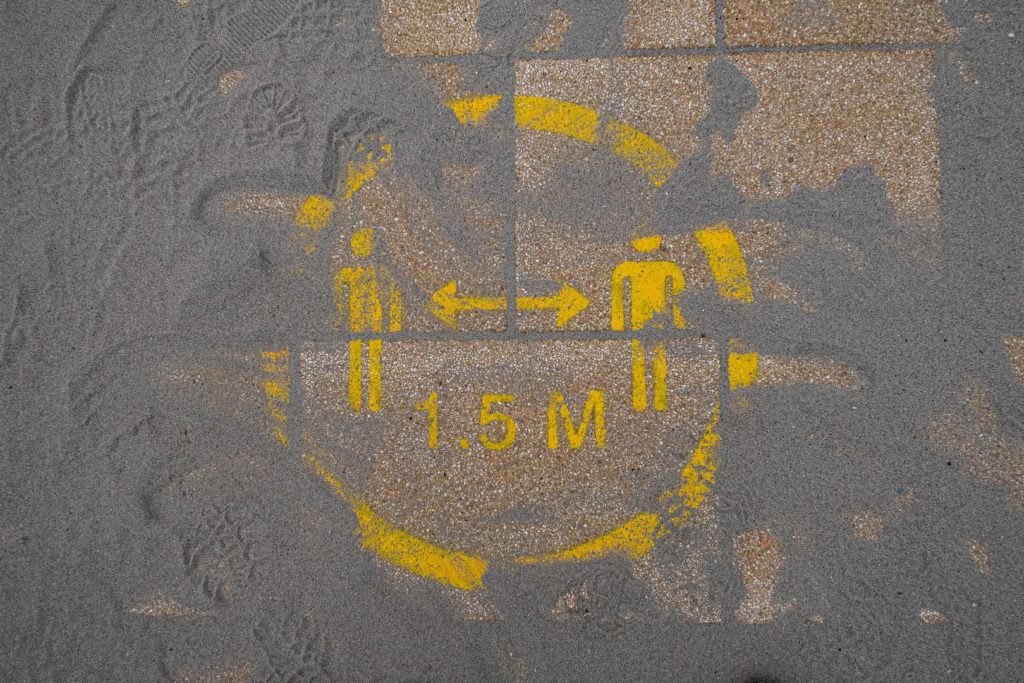
Well, now I return to the reminiscences of the gentleman who led both Mecher and Hatchett under Bush, as well as others who were at the origin of the universal quarantine strategy.
Speaking about having to explain this strategy, Mr. Rajeev Venkayya recalls the metaphor used then to explain it, which, in his opinion, is highly relevant even now. What metaphor is this?
“When explaining the strategy,” – says Rajeev Venkayya – “we asked people to visualize each intervention, such as school closure, as a slice of Swiss cheese — an imperfect barrier to virus transmission as represented by the holes in the cheese. When multiple partially effective interventions are combined early in an outbreak, like stacked Swiss cheese slices, the gaps are covered and virus transmission is slowed, or even stopped.”
I suggest that all Russian citizens continuously imagine a piece of cheese as a calming image, soothing their imprisonment… sorry, their self-isolation. Well, and to remember that free cheese is only in a mousetrap. And here we are talking about cheese with a fantastic price of many trillions of dollars. As for the gentleman who shares these memories with us, he does not stop at bygone times, but says the following about COVID:
“Governments around the world have implemented variations on this (cheese – SK) strategy against Covid-19. South Korea was successful with a particularly effective slice (of cheese – SK): robust testing, contact tracing, quarantine, and isolation. Once it was recognized that Covid-19 was being transmitted in the U.S., states took multilayered approaches to avoid a catastrophic burden on hospitals and save lives. We are just beginning to see the impact of these efforts.
We can’t change the past, but we have a second chance to show we can contain this virus. Widespread stay-at-home restrictions can eventually suppress virus transmission to a level that existed several weeks ago, rewinding the epidemiologic clock and making containment possible once again.
At that point, we can take three steps that will allow us to relax the most restrictive social-distancing measures and reopen our cities:”
Demand № 1 is for everyone to wear a mask
“A cloth mask does not provide substantial protection to the person wearing it, but it can prevent an infected person from transmitting Covid-19 to others. In the lingo of epidemiology, this is called source control. The Centers for Disease Control and Prevention has already recommended that the public use face coverings and published DIY mask instructions, but this is not enough. We need a directive — not just a recommendation – that everyone should wear a cloth mask in public places. This could substantially reduce transmission in communities while making it possible for people to leave their homes. It would also address the thorny problem of transmission of the virus by people who don’t have symptoms.”
Whether you have symptoms or not – wear the mask!
“Several apparel manufacturers have begun producing cloth masks, making it feasible for everyone to have one. Universal source control could be a highly effective layer of Swiss cheese that would allow us to relax other more restrictive measures.”
Next Venkayya describes demand № 2:
“Bring testing to the people. As we relax social distancing, the way to prevent outbreaks is to quickly find people with the virus and stop onward spread through testing, contact tracing, isolation, and quarantine. This requires the availability of testing everywhere, with results available in hours, not days.
To make this work, testing must be available when and where people need it. Drive-through and pop-up testing centers will play a role, but we should also bring testing to people, just as we do with rideshare services and food delivery. Hiring and training a workforce would augment under-resourced public health departments and put people back to work. Workers with medical training could collect samples, supported by an army of non-medical personnel with appropriate personal protective equipment to safely carry out contact tracing and provide guidance on voluntary isolation and quarantine. The technology platforms that power the gig economy could be repurposed and scaled to make this possible across the nation.
The most important enabler of just-in-time testing will be the general public, whose buy-in and sense of personal responsibility can ensure that testing happens when it is needed. It would be ideal for people to seek a test the moment they develop symptoms, as reflexively as grabbing a thermometer if they have a fever.
And if they have Covid-19, isolating themselves and asking their contacts to voluntarily quarantine can help them be the end of the chain of transmission rather than another link in it.”
These are the words of Mr. Venkayya, the head of Rumsfeld’s program, who is now doing all this in a very large company. These are his words and those of his accomplices. And these words do not belong to a distant era, and I am not taking them out of the distant past. He is saying it now.

Then Venkayya, who is calming us down with the help of the Swiss cheese metaphor, goes on to the main thing: more stints behind bars… I beg your pardon, acts of civil responsibility.
“Prepare for Covid-19 rebounds.” – states this gentleman. Upon declaring this, he explains why it is necessary to prepare.
“As we are seeing in Asia,” – he says – “relaxation of social interventions can lead to a resurgence of virus transmission. This will be a risk until we have substantial immunity in the population from a vaccine and/or previous exposure. We need to define triggers to reinstate social interventions early and in a coordinated manner, such as laboratory-based surveillance in the community or our inability to link new cases to known cases. Those triggers and actions should be understood and exercised by all communities.
After this wave of the Covid-19 pandemic, we will have a ‘new normal’ (It is characteristic that this gentleman took the words “new” and “normal” in quotes. – SK) way of living and working that will provide a layer of protection compared to our pre-pandemic life. Early on, we can expect fewer public gatherings, less travel, more social distancing in the workplace, and more virtual interactions. These will certainly reduce the risk of rebound. And if we’ve successfully deployed the first two solutions — masks and testing — we can avoid the most extreme measures that we are experiencing now.”
Concluding his prophecy, Mr. Venkayya again – he seems to have some special passion for this – addresses us to the Swiss cheese metaphor… Many people are dead from COVID-19, everything else aside… One could have found something else more appropriate…
And so, the Swiss cheese metaphor, according to Mr. Venkayya: “These interventions (the three mentioned above – SK) are the layers of Swiss cheese that can let us reopen our cities while preventing a resurgence of infections. They’ll enable us to flatten a second wave of the pandemic if it comes in the fall — or sooner — but most importantly they will buy us much-needed time until we have a vaccine.” Which he as a businessman and a vaccinator will produce. Or his accomplices in this matter.
And of course, the vaccine, in any case, will be given to CEPI, on the Board of which sits this representative of a major Japanese pharmaceutical company and, at the same time, one of the members of the Rumsfeld group, which first began to develop the quarantine (I am 100% convinced now!) not as a measure to protect the population, it is a pretext, but as a way to transform both society and Man.
But do I really have serious reasons to insist that this COVID business is really geared, I repeat, at the transformation of both society and Man? Yes, I have reasons to believe so. But we will talk about this next time.
(To be continued.)
Source (for copy): https://eu.eot.su/2020/11/23/coronavirus-its-goals-authors-and-masters-part-vii/
This is the translation of the seventh article (first published in the “Essence of Time” newspaper issues 387 on July 30, 2020 and 388 on August 8, 2020) by Sergey Kurginyan.

